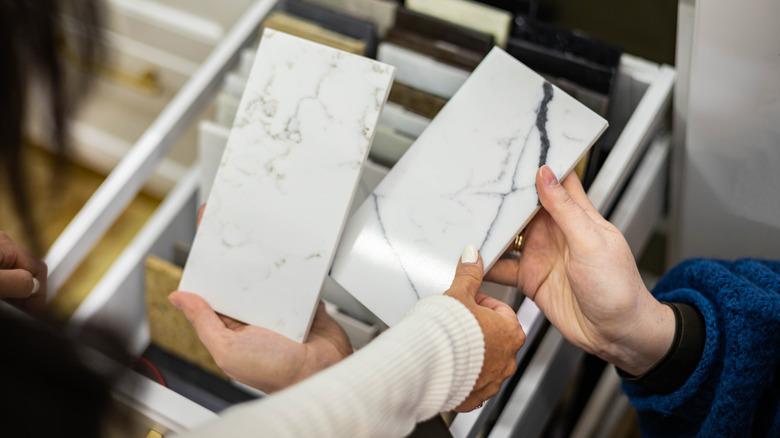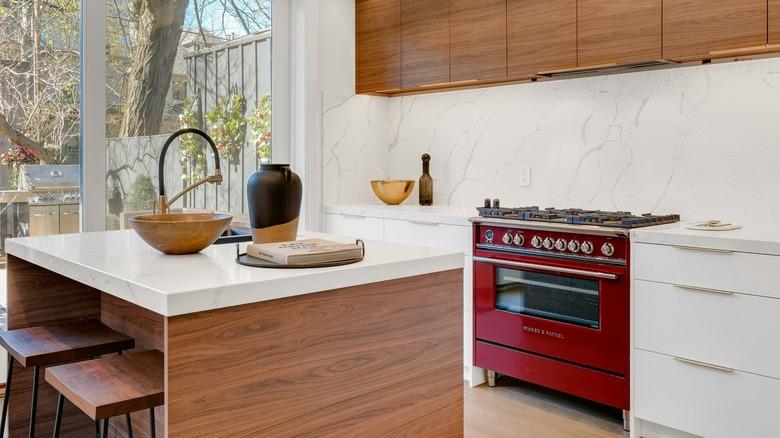The Outdated Countertop Style You'll Want To Avoid When Updating Your Home
It's not always easy to stay on top of the fashionable choices for countertop styles. Trends emerge slowly before cascading into ubiquity. Natural stone and engineered stone countertops have gained popularity in kitchens because of their look, durability, and relatively low maintenance. They're still all the rage, but homeowners have started gravitating toward slimmer versions of stone countertops. Beefed-up countertops have started to look outdated as homeowners have begun favoring thinner countertops to achieve a sleek, modern look.
Stone countertops came thicker, in part, because they exuded a sense of luxury. Countertop material, like marble, already looks high-end, but a thicker marble countertop makes for a bolder look. Thicker counters also have the benefit of supporting more weight and greater durability because they are less prone to chips and dents. The disadvantages of thick countertops extend beyond aesthetics, as people consider kitchen space and cost. These are just two reasons why thinner profile countertops are gaining popularity.
Why are thick countertops out of style?
Thick kitchen countertops are a trend that now makes your kitchen look outdated, as manufacturing advances have created new style opportunities. Stone countertops were thicker due to machinery limitations for fabricators. Technology has progressed so stone countertops can get cut thinner while lowering the risk of the stone cracking or breaking. Stone countertops can come with a thickness of less than an inch, a sharp reduction from the usual 1 ½ or 2-inch thickness familiar to homes.
When thinner countertops became available homeowners jumped at the opportunity to add the look to their kitchen and home. The crisp lines appeal to those seeking contemporary style. Other benefits of slimmer countertops have emerged, too. Manufacturers have added more rounded edges and curves to countertop designs. The ability to craft different shapes creates design flexibility so they fit more than just modern style aesthetics. Another benefit of thinner counters is they can make smaller kitchens feel bigger. The decreased thickness creates more space between counters and cabinets to give the space a more open feel.
Best materials for thin countertops
The advances in engineered stone have led to thinner countertops with greater strength than in the past. Engineered quartz countertops have become popular for their look and durability, but the sleeker version has emerged in homes seeking clean lines. While clean lines prevail as the most common design with thin countertops, you can opt for beveled and rounded versions, too. Some designers have used thin stone countertops to create floating counters or full backsplashes by removing upper cabinets. In bathroom spaces, designers have used granite bathroom backsplash ideas to extend the stone countertop look to walls for stunning scenes.
Any home project comes down to cost and budget. Thinner countertops have moved to the front of the line of trendy design ideas because they don't require as much material, which reduces costs. The thinner style can also reduce installation costs because there's less work involved for other tradespeople to do, like plumbers when they have to prep for fixtures.


